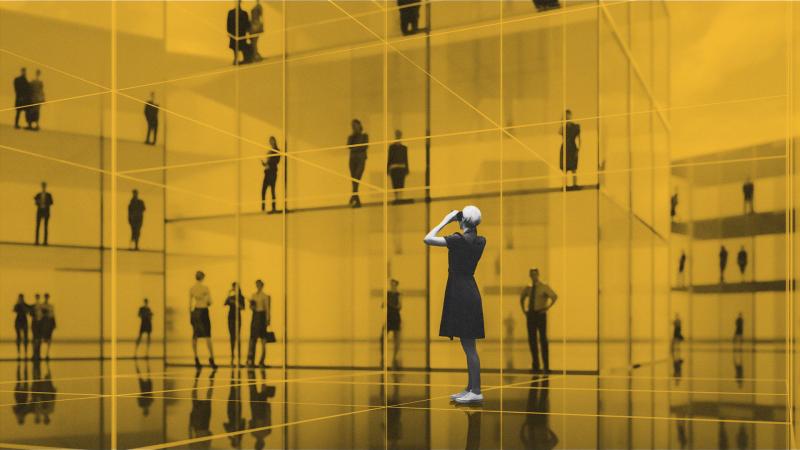Recently, Rosie McAlister & Kate Verran joined UX Career Coach, Mags Hanley to present at a Women in UX Meetup, organised by UX Australia.
Their discussion focused on three key areas – salary, flexibility, and projects – which they felt are key to consider when searching for a new human centred design role, undertaking career conversations for tenured staff, or for employers to consider when looking to hire a new team member.
Although salary and benefits come under HR and company policy, team leads and hiring managers often have the potential to impact some flexibility elements and usually define the approach to projects — both of which can have a huge impact on fostering a positive work and career experience and overall team culture.
In terms of working logistics, things are certainly shifting — we’re seeing some organisations move from team or division working plans, into individual work plans — it doesn't have to be a one size fits all.
Rosie McAlister, our Senior Talent Agent, Digital Design & Development, provides an overview:
Salary:
Current market insights and moving beyond the base salary.
Researching the current market is so important. Not all companies publish salary data, but you can reach out to specialist recruiters such as Aquent, and check out our free Salary Guide.
When considering earnings, be sure to look beyond the base salary. Some clients offer benefits and bonuses that not only boost earnings, but can actually be more important when it comes to life beyond work.
The perks that we often see are:
- Additional leave: This could be related to annual leave like extra time per year in the role, unlimited leave, buy-sell leave; or it could be special leave such as extra parental leave, gender affirmation leave, or pregnancy loss leave.
- Extra perks: Sign-on bonuses, money for home office set up, travel insurance and health insurance cover, childcare subsidies, or share/stock options.
- Wellbeing and Learning funds: Sometimes they can be linked to role-specific education or upskilling, while others are more varied such as gym membership, physiotherapy, mental health services, or even language course or pottery classes.
- Work anywhere policies: Domestic and international options, as well as family days.
Flexibility:
Delve into why, what this means, striking the balance.
For hiring managers, it's important to establish what you can give and clearly articulate those boundaries around ‘what you can give and what they will get’.
Some things to consider:
- Work/life balance: Balancing other commitments like childcare, caring duties, pets etc.
- Mental health, accessibility, and inclusivity: Providing more options for neuro-diverse staff to flourish, considering post-covid onsite work anxiety, setting up inclusive & accessible office spaces
- Changing logistics of city living/population mobility: the cost of living, relocations from city centres, travel time, cost.
- Physical location: Changing office set-ups, working on tiny laptop screens.
- Times & Days: Full-time, part-time, flexi-time, consulting, job sharing.
From a team lead or hiring manager perspective, it can be challenging to strike a balance, but it is so important to articulate the ‘why’ for your team and each employee to buy into, but also advocate across the organisation to promote value and awareness of the value in your future work style.
We find most candidates are open to and find value in onsite work that's focused on deeper collaboration such as workshops, key stakeholder meetings, project kick-offs.
Our team leads are often talking about balancing:
- Company objectives, and often real estate spend, with employee location preferences.
- Connection and collaboration, with remote working as a deep focus.
- Team culture, office vibe, and a sense of belonging.
- Agile sprints and project tempo, with team pace to avoid burn-out.
- Team collaboration for workshops and key meetings, with restrictions of physical office spaces full of banks of desks.
Projects:
How the work can help transcend all other elements.
Within the human centred design and digital areas that we focus on, once the baseline salary and flexibility elements are met, candidates will ultimately be swayed by the projects they work on and the people they work with.
Providing insights to your projects and the team is key and ensure this information makes it through to your preferred recruiter and HR teams, and onto your job ads.
Celebrating the success of your projects and people not only helps boost external attraction to your employer brand, company, and team, but it also helps foster a more positive team culture with internal acknowledgement for the hard work the team put in.
Some areas that hiring managers and team leads can really impact are:
- Taking the time to provide candidates with a clear career path and aligning projects to their career stage
- Promoting a culture of physiological safety for innovation to grow
- Dedicating time for the team to engage in knowledge sharing
- Fostering a culture of continual learning with mentoring and support at all levels
People want to do good work with good people, and often this will transcend all the other elements a role will offer.
Latest.

Celebrating Diversity in Creativity: Embracing International Day of Persons with Disabilities
Benefits & Equality

Don’t fear pay transparency—embrace it.
Industry Trends, Benefits & Equality

AI can help diversity recruiting, but ask these questions first.
Hiring Insights, Benefits & Equality


